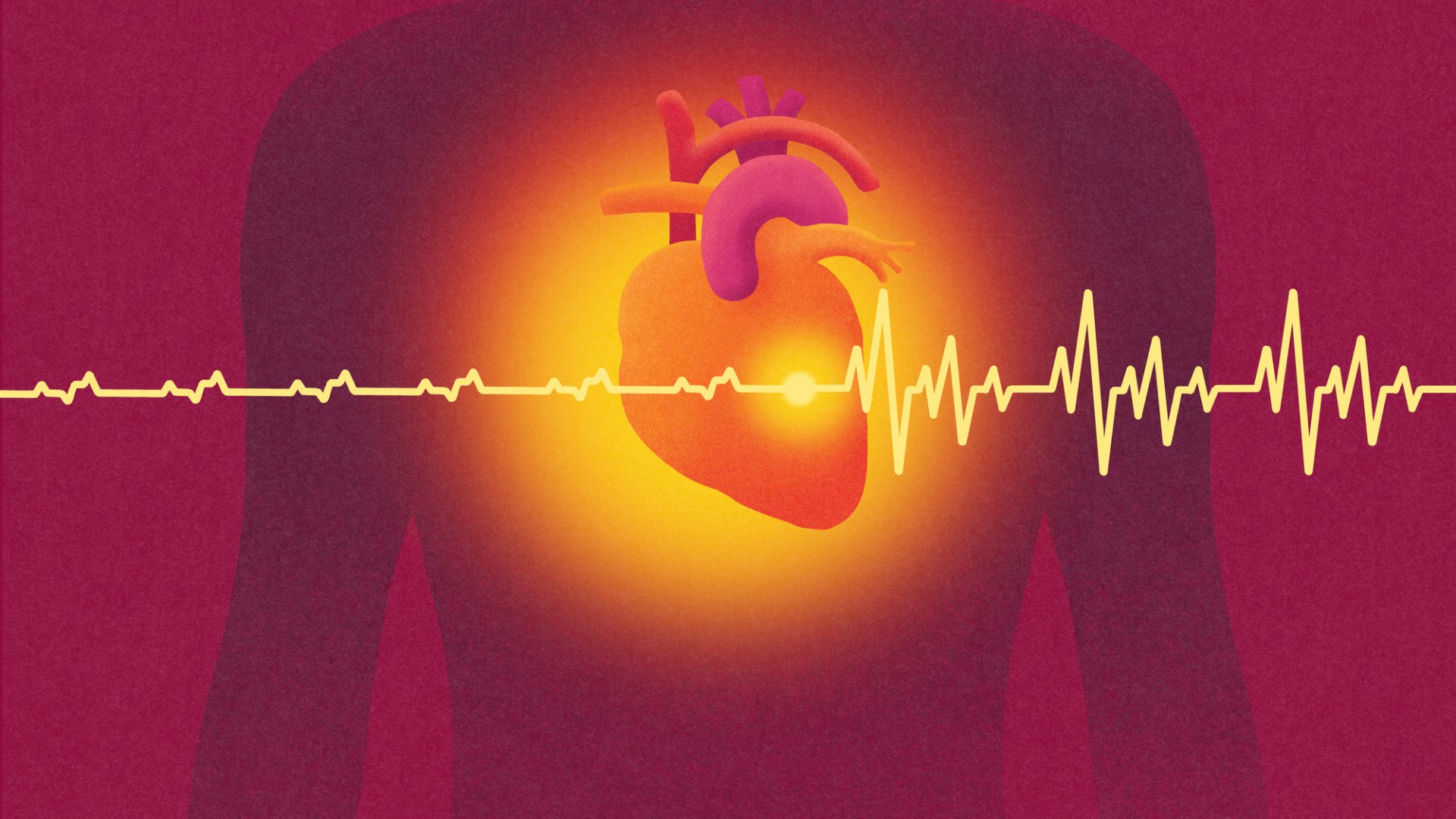ATRIAL fibrillation is three times more common than previously thought, scientists say.
Experts initially believed the condition – which causes a rapid, irregular heartbeat and can trigger heart attacks and strokes – affected just a small proportion of the population.
1
But new estimates from the University of California San Francisco suggest almost five per cent of people have it – about 10.5million adults in the United States.
The British Heart Foundation says one in 45 people, or 1.5million, in the UK are known to be living with atrial fibrillation, but the true number could be much higher.
First author Dr Jean Jacques Noubiap said: “Atrial fibrillation doubles the risk of mortality, is one of the most common causes of stroke, increases risks of heart failure, myocardial infarction, chronic kidney disease and dementia, and results in lower quality of life.
“Fortunately, it is preventable, and early detection and appropriate treatment can substantially reduce its adverse outcomes.”
Atrial fibrillation is a condition that causes an irregular and often very fast heartbeat.
A normal heart rate should be between 60 and 100 beats per minute when resting, but it can be considerably above this threshold in someone with atrial fibrillation, according to the NHS.
Patients often also experience dizziness, shortness of breath, tiredness, and palpitations – but others have no symptoms at all.
Experts say atrial fibrillation has been on the rise for the last decade, driven by increasing rates of high blood pressure, diabetes and obesity, but millions more could be at risk than originally feared.
Researchers reviewed the medical records of almost 30million adults who received care in California between 2005 and 2019.
About two million of these people had been diagnosed with atrial fibrillation, and the numbers grew over time – rising from 4.49 per cent of patients treated between 2005 and 2009, to 6.82 per cent between 2015 and 2019.
After standardising the data to reflect the entire country, scientists found the national prevalence to be at least 10.55million.
They also found that during the study timeframe, atrial fibrillation patients tended to get younger, were less likely to be female, and more likely to have hypertension and diabetes.
As well as the direct symptoms, atrial fibrillation can lead to blood clots, strokes, heart attacks and heart failure.
Previous studies have shown that people with the condition are up to five times more likely to have a stroke than those without it.
This is particularly scary as many of those with atrial fibrillation, often dubbed a “silent killer”, have no idea.
Atrial fibrillation explained

YOUR heart is controlled by a conduction system, which sends out electrical signals. This is what causes a heartbeat.
Atrial fibrillation is a type of arrhythmia – a problem with the conduction system that can make your heart beat too slowly, too quickly or in an irregular way.
Atrial fibrillation happens when the electrical signals in the top chambers (atria) of your heart do not get sent out properly.
They should be steady and regular, but instead they quiver or twitch (fibrillation).
This causes your heart to beat randomly, which means it does not pump blood as well as it should.
Atrial fibrillation is not life-threatening itself, but it can create blood clots in the heart that may cause a stroke.
Many people won’t experience any symptoms at all, but some have palpitations, chest pain, tiredness, shortness of breath and dizziness.
The cause is not always known, but the most common is damage to the heart.
This can be caused by things like high blood pressure, heart valve disease, coronary heart disease, obesity, stress and diabetes.
It is also associated with other medical conditions, including asthma, COPD, lung cancer and carbon monoxide poisoning.
But not everyone with atrial fibrillation is unwell, and it can sometimes affect people who are physically very fit, such as athletes.
Treatment may include medication, ablation, cardioversion and having a pacemaker fitted.
Source: British Heart Foundation
Senior and corresponding author Dr Gregory Marcus, a cardiologist and electrophysiologist, said: “Physicians recognise that atrial fibrillation is often encountered in essentially every field of practice.
“These data provide objective evidence to demonstrate that prior projections severely underestimated how common it truly is.”
He added that digital technology, such as Apple Watches and smart rings, may reveal that it is even more common than this analysis indicates.
“With the growing use of consumer wearables designed to detect atrial fibrillation, combined with safer and more effective means to treat it, this current prevalence of atrial fibrillation in health care settings may soon be dwarfed by future healthcare utilisation that will occur due to the disease,” Dr Marcus said.
The findings were published in the Journal of the American College of Cardiology.




